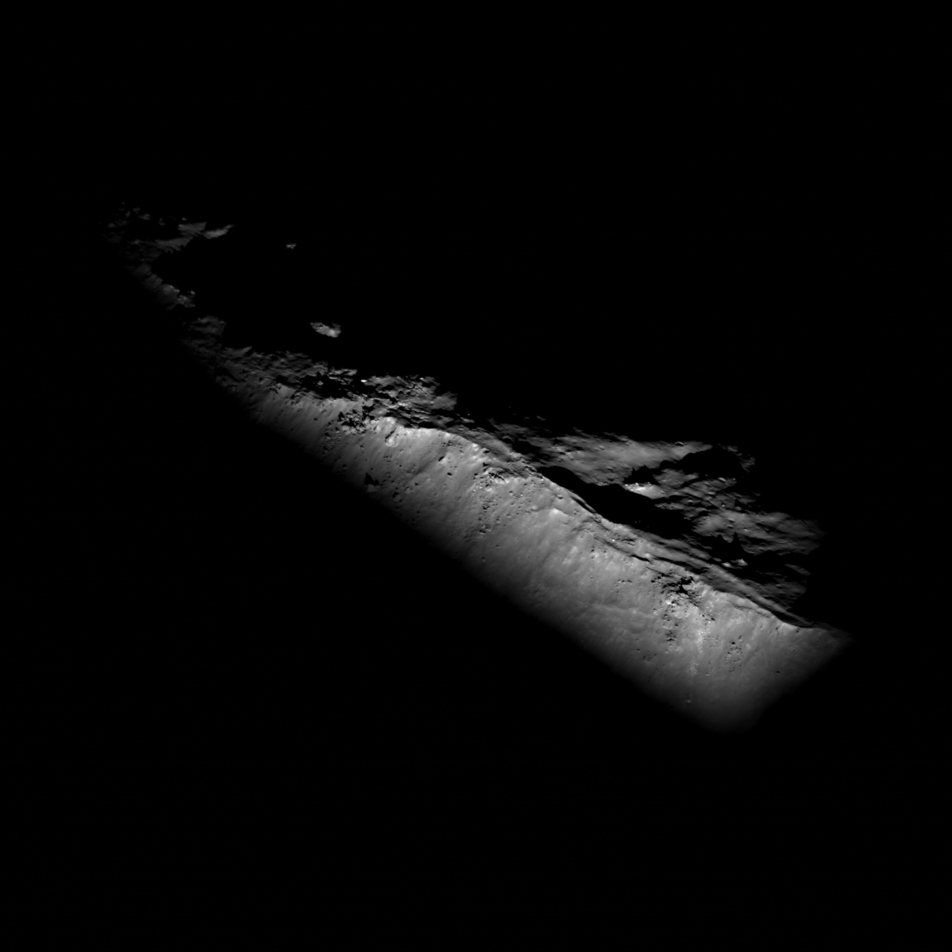
Two weeks ago on April 28, 2016, LROC captured this magnificent view of the western wall of Jackson crater as it emerged from its two-week night. Imagine standing on the rim of Jackson, with the crater floor nearly 4 km (2.5 miles) below you, watching the sun rise and slowly illuminate boulders one by one.

Jackson crater, despite being a relatively modest 71 km in diameter, is one of the most prominent craters on the farside of the Moon because of its extensive ray system. These rays indicate that the crater is relatively young in age, because as craters age their rays lose their bright contrast with nearby terrain. Other indicators of the crater's youth include the crisply preserved boulders and solidified impact melt that are found throughout crater floor and exterior, and can be seen across the rim above. Many of the boulders in this image will eventually slide down the crater wall and be eroded or buried by other slumping material, and the layer of solidified impact melt that coats much of the scene will be gardened by subsequent smaller impacts over time until Jackson acquires a subdued appearance like many of its neighboring craters. In fact, this process is already happening - if you look closely by zooming in and scrolling across the scene below, you can find numerous small impact craters that dot Jackson's rim.
Today, two weeks after this image was acquired, the Sun is now setting on Jackson as it enters its next long night.
Related Featured Images:
Melt Fractures in Jackson Crater
Published by Brett Denevi on 11 May 2016